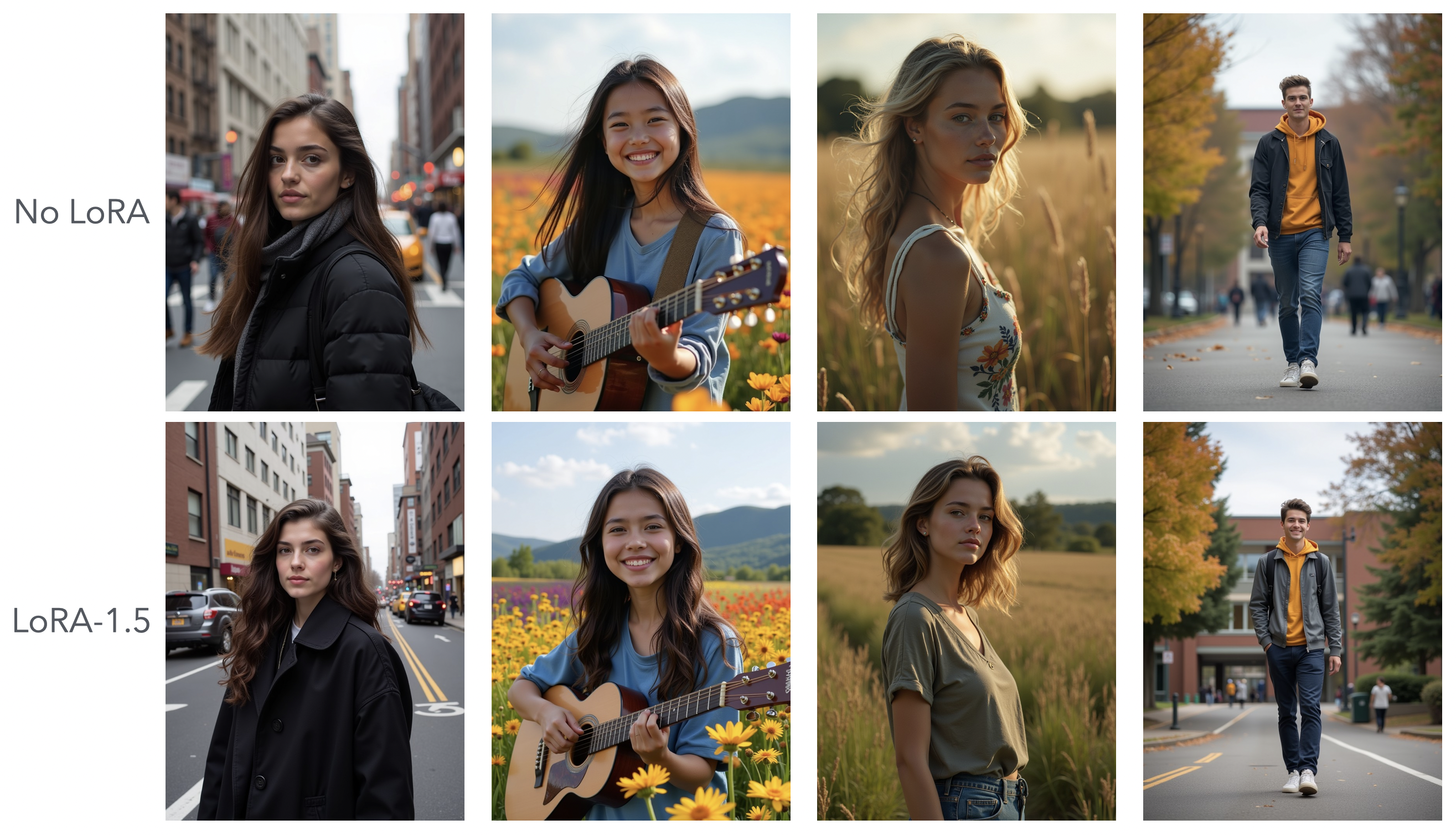FLUX.1-dev-LoRA-AntiBlur Released by Shakker AI Team: A Breakthrough in Image Generation with Enhanced Depth of Field and Superior Clarity

The release of FLUX.1-dev-LoRA-AntiBlur by the Shakker AI Team marks a significant advancement in image generation technologies. This new functional LoRA (Low-Rank Adaptation), developed and trained specifically on FLUX.1-dev by Vadim Fedenko, brings an innovative solution to the challenge of maintaining image quality while enhancing depth of field (DoF), effectively reducing blur in generated images.
Shakker AI’s FLUX.1-dev-LoRA-AntiBlur is primarily designed to work within text-to-image generation pipelines, offering enhanced control over the sharpness and focus of images without compromising overall quality. Despite being an early developmental version, this model demonstrates exceptional functionality in image processing, earning the attention of developers and AI enthusiasts alike. With 641 downloads in the last month alone, it’s clear that the AI community is embracing the model.
One of the main strengths of the FLUX.1-dev-LoRA-AntiBlur model is its ability to reduce blur while retaining the integrity of image details. This achievement is significant because most traditional methods of lowering blur in image processing come at the cost of degrading image quality. The model avoids this common pitfall and instead delivers a smoother, cleaner image output, particularly noticeable in areas where a strong depth of field is needed.
LoRA technology enables fine-tuning neural networks using significantly fewer parameters than traditional methods, making it an efficient and scalable solution for various tasks. In this case, the LoRA is trained specifically for AntiBlur tasks, which improve focus and clarity in generated images. According to Shakker AI’s documentation, the model performs exceptionally well with other components. One is ControlNet, a tool that allows for more precise control over the generated image’s structure and composition.
The FLUX.1-dev-LoRA-AntiBlur has proven to be effective even under extreme testing conditions. For instance, during comparative tests with the FLUX.1-dev base model, the AntiBlur version demonstrated minimal damage to the original image quality, a crucial factor for users who require high-definition outputs without losing critical details. This ability makes it ideal for applications that involve creative visuals, professional photography, or design work where clarity is paramount.
The technical aspects of this model are designed to be user-friendly for developers working within AI image-generation platforms. The recommended scale setting ranges from 1.0 to 1.5 in diffusers, and users can implement the LoRA by loading it into their pre-trained pipelines using PyTorch. For instance, through a simple code snippet using FluxPipeline from the diffusers library, users can easily apply the LoRA weights and fine-tune their models to the desired lora_scale. This approach offers flexibility and customization, allowing developers to adjust the model parameters according to project needs.
The model can also be accessed via Shakker AI’s online interface, enabling users to generate images without requiring the complete setup of local infrastructure. This feature adds accessibility for individuals or smaller organizations that might not have access to extensive computational resources but still wish to leverage cutting-edge image-generation technology. By providing an online interface, Shakker AI expands the usability of the FLUX.1-dev-LoRA-AntiBlur to a wider audience, further driving its adoption.
Regarding licensing, the FLUX.1-dev-LoRA-AntiBlur is distributed under a non-commercial license, which means it is intended primarily for research and personal use rather than commercial purposes. This ensures that the AI community can widely test and refine the technology while preventing potential misuse for commercial gain without appropriate authorization.
In conclusion, the release of the FLUX.1-dev-LoRA-AntiBlur by Shakker AI represents a significant leap forward in image generation capabilities. Its ability to enhance depth of field without degrading image quality makes it a valuable tool for anyone working with AI-generated visuals, particularly in creative and professional fields. As the model continues to be tested and improved, FLUX.1-dev-LoRA-AntiBlur will likely become a staple in the toolkits of developers and artists looking to push the boundaries of what is possible with AI-generated images.
Check out the Model. All credit for this research goes to the researchers of this project. Also, don’t forget to follow us on Twitter and join our Telegram Channel and LinkedIn Group. If you like our work, you will love our newsletter..
Don’t Forget to join our 50k+ ML SubReddit
⏩ ⏩ FREE AI WEBINAR: ‘SAM 2 for Video: How to Fine-tune On Your Data’ (Wed, Sep 25, 4:00 AM – 4:45 AM EST)
Asif Razzaq is the CEO of Marktechpost Media Inc.. As a visionary entrepreneur and engineer, Asif is committed to harnessing the potential of Artificial Intelligence for social good. His most recent endeavor is the launch of an Artificial Intelligence Media Platform, Marktechpost, which stands out for its in-depth coverage of machine learning and deep learning news that is both technically sound and easily understandable by a wide audience. The platform boasts of over 2 million monthly views, illustrating its popularity among audiences.













